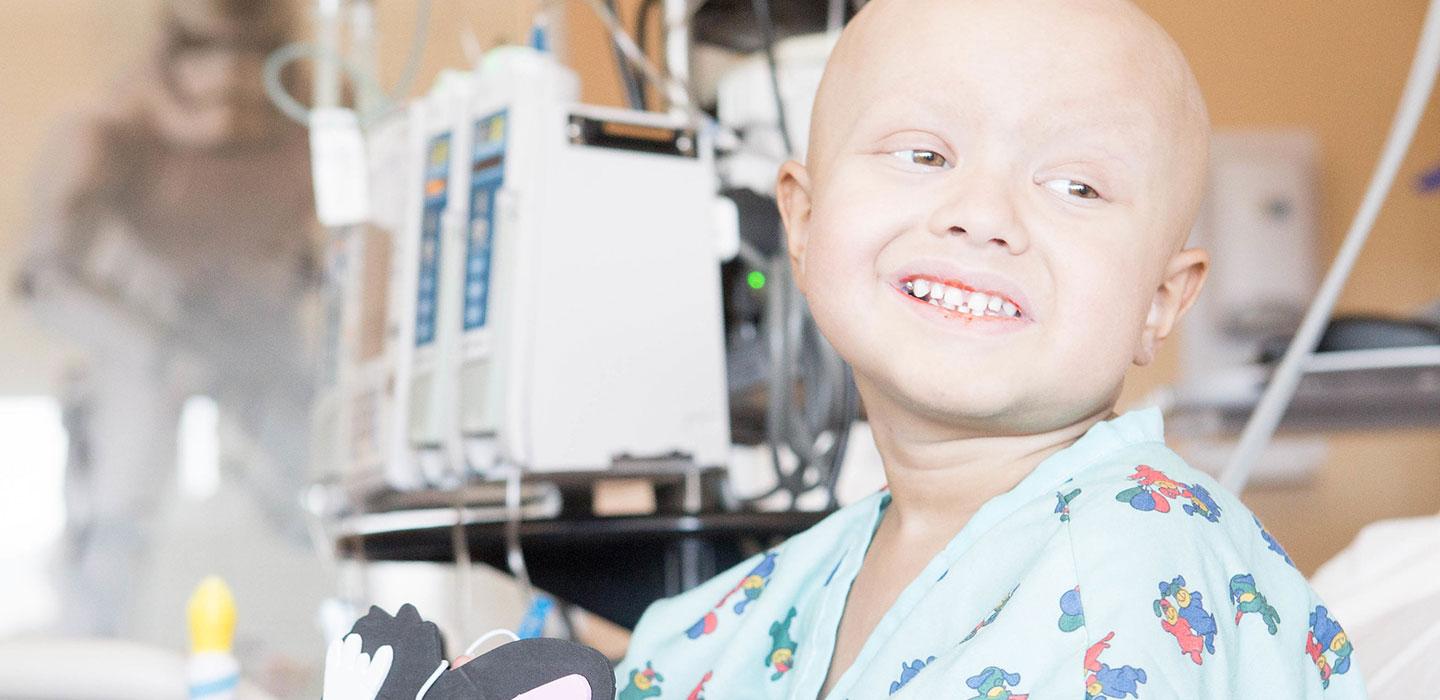Kaysan: Healing as a Family
What if you had to choose between caring for your sick son and your newborn? Luckily, this mom didn’t have to.

Kaysan’s legs were covered in dark bruises, and his mother, Brittany, was starting to worry. Sure, active 3-year-olds like Kaysan often bump their legs while playing, but this seemed excessive.
Brittany took Kaysan to his pediatrician as a precaution, and he assured her the bruises looked ordinary. To put her mind at ease, he ordered a blood test.
“I felt like I was being a paranoid mom,” Brittany says. “But I had a gut feeling that something was off.”
She was right. At 9:30 that night, the pediatrician called: Bring Kaysan to the hospital. Now.
“I asked, ‘Can’t this wait until tomorrow?’” Brittany recalls. “The doctor said, ‘No, this is serious.’”
She and her husband packed Kaysan and his infant brother into the car, still in their pajamas, and drove to the hospital, an hour away, in the pouring rain.
“I didn’t even bring diapers,” Brittany says. “I didn’t think we’d be there long.”
Three months would pass before Kaysan left the hospital. The day after he arrived, he was diagnosed with acute myeloid leukemia (AML), a rare and aggressive blood cancer. After two rounds of chemotherapy, Kaysan was transferred to UCSF Benioff Children’s Hospital San Francisco – ranked best in Northern California for cancer treatment – for a bone marrow transplant.
Kaysan was put in isolation to protect his fragile immune system. His brother Zyan, only 8 months old, could join him in the hospital. But if Zyan was taken outside, he wouldn’t be able to re-enter his brother’s room because of the risk of infection. His parents were faced with a tough choice: Gather everyone in one hospital room, or break up the family.
“How could I choose between my sick son and my nursing baby?” Brittany says.
Ultimately, the family lived together in the hospital for seven months. In his brother’s hospital room, Zyan took his first steps, celebrated his first birthday, and said his first words. It was challenging to live in close quarters, but the nurses went above and beyond to help. They often would scoop Zyan from Brittany’s arms and rock him to sleep so she could focus on Kaysan.
“The nurses became like family. They were my heroes, they were our village,” Brittany says. “They not only took care of Kaysan, they took care of all of us.”
Kaysan’s first bone marrow transplant – with his father, a half match, as a donor – was unsuccessful. A second round was attempted; again, it failed. As Kaysan’s condition deteriorated, his medical team found a suitable unrelated donor. This time, the transplant worked. The donor stem cells jump-started the production of healthy blood cells in Kaysan’s dangerously fragile body.
“We were over the moon,” Brittany says. “It was incredible to see him getting stronger and stronger.”
Kaysan, now 6, is back home, enjoying karate, swimming, and running around outside with his little brother – especially after they both spent so long indoors. He still gets his fair share of bumps and bruises, but now they have a different meaning: He’s back to his playful, energetic self.
“I look at him and think, ‘Wow, you’ve come so far,’” Brittany says. “And I know if it wasn’t for his doctors and nurses at UCSF, we wouldn’t have him here.”